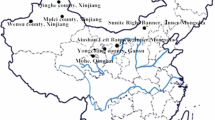Abstract
The present study attempts to analyse sequences of the X- and Y-chromosome specific regions of the amelogenin (AMEL) gene in red deer. To this end, primers specific for each form of the gene (AMELX and AMELY) were designed based on bovine genomic sequences and the homologous regions of the genes were sequenced. The obtained sequence of AMELX gene showed high similarity with the corresponding region in cattle (91%) and humans (77%), but this similarity was slightly lower among AMELY genes and showed 87 and 73% of identical nucleotides, respectively. In addition, three single nucleotide polymorphisms (SNPs) were found in the AMELX gene of the female red deer investigated. Comparative analysis of the homologous fragments of the red deer AMELX and AMELY genes confirmed the deletion of an AMELY gene fragment in relation to AMELX. Homology of both sequences was 82% of identical nucleotides in the coding region and 74% in 3′ non-coding sequence. The sequences studied showed considerable similarity to homologous fragments of the human and bovine gene, but the structural differences observed lead us to design PCR-based method for sex identification in red deer, based on the presented sequences.


Similar content being viewed by others
References
Shimokawa H, Tamura H, Ibaraki K, Sasaki S (1989) Human amelogenin gene. In: Fearnhead RW (ed) Tooth enamel V. Florence Publsihers, Yokohama, pp 301–305
Girondot M, Sire JY (1998) Evolution of the amelogenin gene in toothed and toothless vertebrates. Eur J Oral Sci 106:501–508
Li W, Mathews C, Gao C, DenBesten PK (1998) Identification of two additional exons at the 3′ end of the amelogenin gene. Arch Oral Biol 43:497–504
Baba O, Takahashi N, Terashima T, Li W, DenBesten PK, Takano Y (2002) Expression of alternatively spliced RNA transcripts of amelogenin gene exons 8 and 9 and its end products in the rat incisor. J Histochem Cytochem 50:1229–1236
Nakahori Y, Takenaka O, Nakagome Y (1991) A human X–Y homologous region encodes amelogenin. Genomics 9:264–269
Sullivan KM, Mannucci A, Kimpton CP, Gill P (1993) A rapid and quantitative DNA sex test: fluorescence-based PCR analysis of X–Y homologous gene amelogenin. BioTechniques 15:636–641
Gibson C, Golub E, Herold R, Risser M, Ding W, Shimokawa H, Young M, Termine J, Rosenbloom J (1991) Structure and expression of the bovine amelogenin gene. Biochemistry 30:1075–1079
Gibson CW, Golub EE, Abrams WR, Shen G, Ding W, Rosenbloom J (1992) Bovine amelogenin message heterogeneity: alternative splicing and Y-chromosome gene transcription. Biochemistry 31:8384–8388
Pajares G, Álvarez I, Fernández I, Pérez-Pardal L, Goyache F, Royo LJ (2007) A sexing protocol for wild ruminants based on PCR amplification of amelogenin genes AMEL and AMELY. Arch Tierz Dummerstorf 50:442–446
Ennis S, Galagher TF (1994) A PCR-based sex determination assay in cattle based on the bovine amelogenin locus. Anim Genet 25:425–427
Yamauchi K, Hamasaki S, Miyazaki K, Kikusui T, Takeuchi Y, Mori Y (2000) Sex determination based on fecal DNA analysis of the amelogenin gene in Sika Deer (Cervus nippon). J Vet Med Sci 62:669–671
Pfeiffer I, Brenig B (2005) X- and Y-chromosome specific variants of the amelogenin gene allow sex determination in sheep (Ovis aries) and European red deer (Cervus elaphus). BMC Genet 6:16–17
Sasaki S, Shimokawa H (1995) The amelogenin gene. Int J Dev Biol 39:127–133
Richard B, Delgado S, Gorry P, Sire J (2007) A study of polymorphism in human AMELX. Arch oral Boil 52:1026–1031
Sipos R, Székely AJ, Palatinszky M, Révész S, Márialigeti K, Nikolausz M (2007) Effect of primer mismatch, annealing temperature and PCR cycle number on 16S rRNA gene-targeting bacterial community analysis. FEMS Microbiol Ecol 60:341–350
Bru D, Martin-Laurent F, Philippot L (2008) Quantification of the detrimental effect of a single primer-template mismatch by real-time PCR using the 16S rRNA gene as an example. Appl Environ Microbiol 74:1660–1663
Findlay I, Quirke P (1996) Fluorescent polymerase chain reaction: Part I. A new method allowing genetic diagnosis and DNA fingerprinting of single cells. Hum Reprod Update 2:137–152
Author information
Authors and Affiliations
Corresponding author
Rights and permissions
About this article
Cite this article
Gurgul, A., Radko, A. & Słota, E. Characteristics of X- and Y-chromosome specific regions of the amelogenin gene and a PCR-based method for sex identification in red deer (Cervus elaphus). Mol Biol Rep 37, 2915–2918 (2010). https://doi.org/10.1007/s11033-009-9852-4
Received:
Accepted:
Published:
Issue Date:
DOI: https://doi.org/10.1007/s11033-009-9852-4




